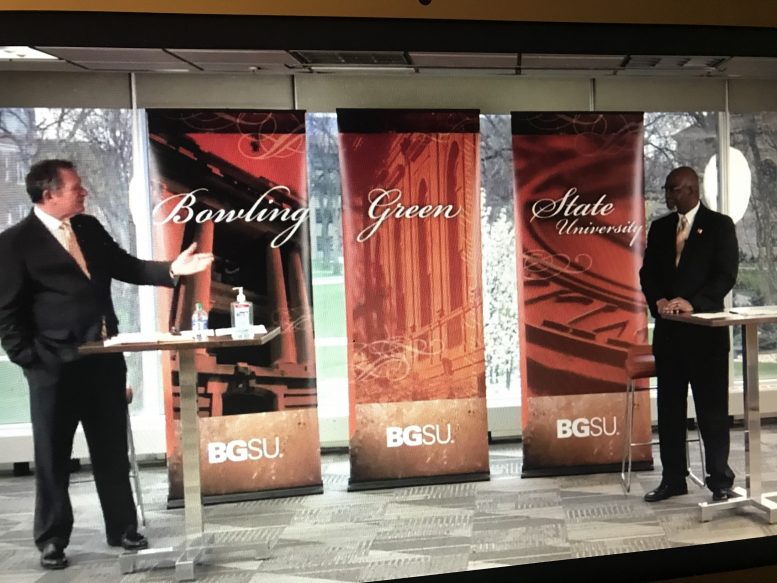By DAVID DUPONT
BG Independent News
Bowling Green State University has announced it will rescind furloughs based on a sunnier outlook for state revenues.
President Rodney Rogers also said in an interview that some employees who had been laid off or had their contracts non-renewed possibly could return to work.
The university was projecting a 20-percent decrease in state funding, However, that decrease now looks like it will be 4.38 percent, or a decrease of $3.5 million from last year’s budget. The university’s budget called for a $14.2 million reduction.
Rogers said Tuesday that the university received that news last night. It does, he said, come “with a warning label” from State Chancellor of Higher Education Randy Gardner.
If conditions change for the state, revenue could be reduced midyear.
Still, Rogers said, “in many ways this is welcome news. It does give us some cushion.”
With payroll decisions needing to be made, the administration decided to rescind all furloughs, which are unpaid days off. All administrators, staff, and classified staff, though not faculty members, were going to have furloughs from five to 20 days, based on salary. The higher the pay, the more furlough days. Those furloughs would have saved the university $3.1 million.
Now those will not be imposed. Employees who have already taken furlough days during the first week of July will have those changed to vacation or paid leave days.
Rogers also said that decisions about bringing back some other employees who had been laid off or non-renewed is likely. “There could be some other decisions we could make. … We haven’t made any final decisions.”
These could be particular teaching positions based on enrollment. Also, certain positions that provide support to students could be restored. The university will also need help to do the heightened sanitization that returning to campus in fall will require.
All this, Rogers said, will be done in compliance with the regulations governing employment of classified employees.
And all these changes come with their own warning label. While state aid is important, and makes up about a quarter of the university’s revenue. Tuition and fees make up about 70 percent of the revenue.
Administrators have expressed optimism about enrollment, but Rogers said Tuesday that there has been “some melt” this summer.
“We’ll have to see what things look like in the next month,” he said. “We’re watching the surge of cases here in Ohio and across the state. We are monitoring the issue.”
The fear is that if a resurgence of the pandemic forces the university to return to online-only delivery, many students would decide not to enroll. “Yes, there is that belief,” Rogers said.
In May the university announced the furloughs as part of a package of budget cuts of $29 million, that included the loss of 119 jobs.
Rogers said because of the university’s solid financial position, it was able to project handling over two years the expected shortfall caused by reduced state funding and an expected decline in enrollment. That way it could take advantage of better information as the situation developed.





